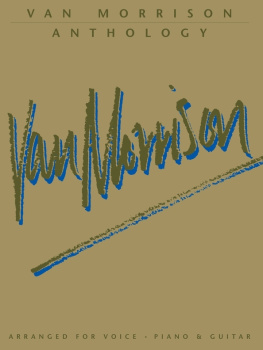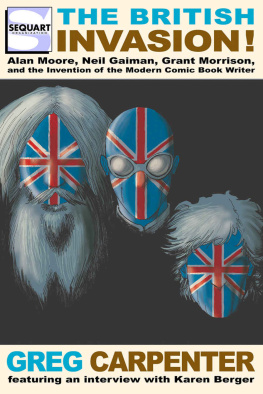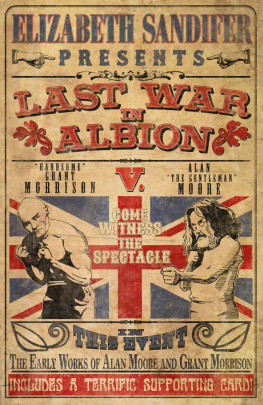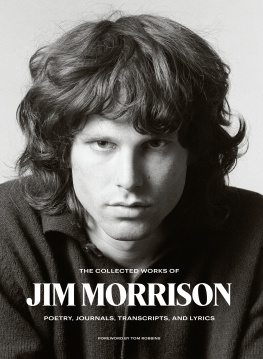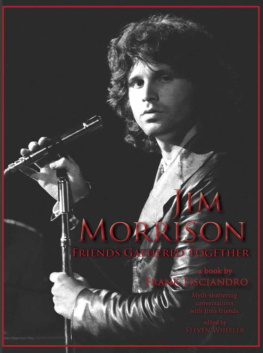Copyright 2007 , 2008, 2011 Timothy Callahan. Zenith and related characters are trademarks of 2000 AD 2011 . Animal Man, Arkham Asylum, Batman, Doom Patrol, and related characters ar e trademarks of DC Comics 2011 .
Kindle edition, January 2012. Third edition, November 2011 . Second edition, September 2008. First edition, May 2007.
All rights reserved by the author. Except for brief excerpts used for review or scholarly purposes, no part of this book may be reproduced in any manner whatsoever, including electronic, without express written consent of the author.
Cover by Kevin Colden. Design by Julian Darius. The cover depicts Grant Morrison and refers to a classic scene from Animal Man . Interior art from Zenth and Hotel Harry Felix is 2000 AD; please visit 2000adonline.com . Interior art depicting Batman, Animal Man, Doom Patrol, Superman, and related characters is DC Comics; please visit dccomics.com . Interior art depicting Doctor Who is BBC Worldwide. Thanks to Grant Morrison, 2000 AD, and Paul Levitz.
Published by Sequart Research & Literacy Organization. E dited by Julian Darius and Mike Phillips , with Cody Walker .
For more information about other titles in this series, visit Sequart.org/books/ .
Material in this volume has previously appeared, in part and / or in previous editions, on Sequart.org .
Foreword by Jason Aaron
I almost named my firstborn child after Grant Morrison.
No shit.
Yet I dont even know Grant Morrison. Ive met him just once, in passing, at a comic - book convention a few years ago. I shook his hand and we spoke for a couple of minutes. He seemed like a very polite and charming fellow, but considering his thick Scottish accent, its entirely possible I couldve been misunderstanding at least half of what he was saying. He knew who I was and had nice things to say about my work, which was a pleasant surprise. But that was it. Thats the extent of my personal relationship with Grant Morrison.
So why would I want to go so far as to name my son after him?
Because of Mr. Whisper and Amadeus Arkham and the Gospel According to Crafty and the Painting that Ate Paris and all the other amazingly mad things detailed in this book.
Because of what Grant Morrison has written. And what it has meant to me. That is why.
I wouldnt be here right now if it werent for those writings. I dont mean that I would be dead, though that does remain a distinct possibility. I mean that I wouldnt be writing this right now, because I wouldnt be writing comics for a living, if it werent for Morrisons work.
I grew up a comic- book fan. I got into them in the early 80s and spent the decade reading loads of Marvel and DC super - hero titles, as well as all the amazing and re grettably short-lived independe nt publishers that sprang up during those days. It was a great time to become a comic - book fan. L andmark works seemingly sprung up every other day, like Watchmen and Frank Millers Dark Knight Returns and Howard Chaykins American Flagg !
I w as already a full-fledged comic- book fan before Id ever heard of Grant Morrison. But it was Morrison who made me want to be something more.
After a decade of voracious reading, I felt like I understood the parameters of mainstream comics pretty well. I knew what you could and couldnt do within the confines of a 22- page super - hero comic. I had seen all that the genre was capable of.
Or so I thought.
But then I read Doom Patrol.
That was the first of Morrisons work I encountered, and it hit me like a blast of cosmic rays. It was like no other super - hero comic I had ever seen. So strange yet endearing, so much more bizarre than anything else I was reading, yet somehow at the same time more real, and the more absurd it became, the more personal it all seemed. There was an imagination on display in those pages that seemed feverish and dangerously unbridled, that seemed to be growing exponentially, throwing off all shackles. This was an imagination to be reckoned with.
Morrisons Doom Patrol soon led me to Arkham Asylum and Batman: Gothic and back to Animal Man , specifically to Animal Man #5, an absurdly heartbreaking story titled The Coyote Gospel. Reading that issue left no doubt. Morrisons work represented a profound paradigm shift fo r me as both a reader and wanna be writer.
Amazed and baffled and mesmerized by those books, I, at some point, had an epiphany.
I dont know what the hell this is, I told myself, but I know I want to do it for the rest of my life.
And here I am.
It was about six years ago that I got my big break in comics and started writing for Vertigo, the same imprint that had published Morrisons Doom Patrol and Animal Man . It was about that same time that my wife became pregnant.
Which brings me back to my firstborn son. I wanted to name him Grant. He almost was named Grant. But then my wife figured out I was naming him after a comic- book writer and put the kibosh on the idea. So instead we named him Dash. Which is now also the name of the main character from one of the series I write.
Art i mitates life, life imitates art just like Morrison taught me.
I feel like I learned a lot from Morrisons early work, and I didnt even have anyone like Timothy Callahan around to help me out, to explain the references and symbolism I wasnt well-read enough to decipher on my own, to point out the themes I couldnt recognize, the connections I couldnt make. Reading this book now is like seeing some of those stories again for the very first time. Its no doubt the next best thing to taking a peek inside Morrisons own head, a place I imagine is part Gothic cathedral, part carnival funhouse, part surrealist fever-dream.
You may not want to name your child Grant after reading this. But hopefully you will be as inspired as I was and still am by Morrison s work. If this is your first time approaching these stories, I say welcome to your own new paradigm shift, my friend.
See you on the other side.
Introduction
C omic books and graphic novels have received more critical attention in recent years than ever before, yet most studies of sequential narrative focus on the big picture they tell about the history of the medium, or provide a biographical overview of a major creator, or provide a synopsis of various important storylines.
In this book, Im doing something different.
Im taking a look at a few works by comic- book writer Grant Morrison, and through close textual analysis, Im going to show what the stories are really about. Im going to show you how to read his work by pointing out the recurring patterns and mo tifs. I m going to show you how he explores a few dominant themes again and again. Im going to show you what hes doing with words and images to challenge the very foundations of narrative. Im going to show you what these comic books reveal about life.
My focus is the work from Grant Morrisons early c areer. He burst onto the comic- book scene and produced a series of masterpieces within a few short years. Between 1987 and 1992, he published Zenith , Arkham Asylum , Animal Man , Batman: Gothic , and Doom Patrol , all of which deserve a close, analytical reading the type of reading Ill provide in these pages. All of these works are, basically, super-hero comic books, and super-hero comic books get little respect. They dominate the shelves of the local comic- book stores, but they arent taken seriously in the critical community. I hope this book shows how much super-hero comic books have to offer, especially if theyre written by a master.



